The Lost Jews of Palestine
“We are of the same race and blood, and cooperation will bring great prosperity to the land,” wrote Emir Feisal to Felix Frankfurter in 1917. Feisal was known for his affinity to the Zionists who had begun streaming to the Holy Land; in 1919, he signed a cooperation agreement with Haim Weizmann, to whom he wrote that he was “mindful of the racial kinship and ancient bonds existing between the Arabs and the Jewish people.”
But Feisal’s proclamations of kindredness with the Jews was more than lip service to a commonly held belief, says Tsvi Misinai, who knows perhaps more about the origins of the modern-day Palestinians than anyone alive. “Faisal’s paternal line was Hashemite, meaning he was directly descended from Mohammed. But the mother of his maternal grandfather, King On, was descended from a family of forced Jewish coverts to Islam that immigrated to the east bank of the Jordan, later returning to one of the villages west of the Jordan. Unlike today, when Faisal was growing up, his grandfather’s mother’s Jewish origin was known, and they made no great effort to hide it. And what was known to Feisal is known to many Palestinians today as well.”
This is a story of what may be one of the best kept secrets in history – one that could, in time, heal the terrible rift that has torn the Land of Israel asunder. After years of research, Tzvi Misinai says that he can declare with certainty that nearly 90% of all Palestinians are descended from the Jewish people. “And what’s more, about half of them know it,” he says. Not only that – many of the Palestinians retain outright Jewish customs, including mourning rituals, lighting Sabbath or memorial candles, and even wearing tefillin!
While the common wisdom among many Israelis is that the group that calls itself “Palestinian” is a motley collection of Arabs from various parts of the 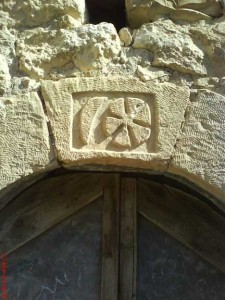 Middle East who immigrated to the Land of Israel following the employment opportunities provided by Jews, Misinai says that the vast majority of today’s Palestinians are descended from the remnants of Jewish families who managed to avoid being deported over the past 2,000 years, or returned to their lands after they were exiled, as the Jews in the Holy Land suffered blow after blow – from the Roman destruction of the Temple to the Crusades to famine, poverty, and war throughout the Middle Ages.
Middle East who immigrated to the Land of Israel following the employment opportunities provided by Jews, Misinai says that the vast majority of today’s Palestinians are descended from the remnants of Jewish families who managed to avoid being deported over the past 2,000 years, or returned to their lands after they were exiled, as the Jews in the Holy Land suffered blow after blow – from the Roman destruction of the Temple to the Crusades to famine, poverty, and war throughout the Middle Ages.
One thing many were unable to avoid, however, was converting to Islam – a forced conversion that never really “took,” done more out of fear than conviction. Misinai has made it his mission to spread the word among Palestinians, giving them the opportunity to retrieve their lost heritage. And not just introduce them to their roots; according to Misinai, the reintegration of what he calls the “Descendants of Israel” with the Jewish people is the best – perhaps the only – way to solve the seemingly endless Middle East crisis.
Despite what some may be thinking, Misinai is not a nut. In fact, he is a high-tech entrepreneur, perhaps the first in Israel’s history. While the kids from ICQ and Google were still in diapers, Misinai was, in the early 1980s, building Sapiens into a world class application developer, focusing on the insurance industry. All those rule-based object-oriented applications we use every day? It was Misinai who invented the concept, and the product, winning the Rothschild Award for Industrial development in the field of software in 1992.
Several years afterwards, he retired from the hi-tech business, to return to his first love – researching the history of the Land of Israel. “I became interested in this area because of my father, who was a great collector of artifacts about the Land of Israel,” he says, a hobby he has continued. But besides objects, Misinai collected stories – legends and folklore from the mouths of mukhtars, village elders throughout the land, attesting to the truth of his assertions. “There are large clans throughout the country, in the Hebron Hills, in Samaria, and among the Negev Bedouins, who know of their heritage, and even have family trees that document their roots. Not only that; many of them have specifically Jewish customs, and their neighbors would call them ‘the Jews,’ even though they were technically as Muslim as anyone else.” Close to 9 out of 10 Palestinians in the Land of Israel – Israel proper, Judea, Samaria, and Gaza – today have Jewish roots. In fact, he says, the percentage in Gaza is somewhat higher than 90%!
Misinai is far from the first researcher to have stumbled upon this historical find. The first president of Israel, Yitzchak Ben Zvi, and the first Prime Minister, David Ben Gurion, wrote several books and articles on the subject. In fact, Ben Gurion believed so strongly in the idea that in 1956, he set up a task force headed by Moshe Dayan and Hayim Levkov (the Palmach’s “point man” among the Arabs of Israel, he worked with Yigal Allon to set up the Trackers Unit, traditionally the domain of Negev Bedouin) that was supposed to develop ways to “Judaize” the Bedouin, teaching them something about modern Jewish life and tradition in order to integrate them with the Israeli people, ethnically if not religiously. The Bedouin were willing enough, but the teachers who were supposed to live and work with them dropped out of the program, because of the rough living conditions. In the end, Dayan convinced Ben Gurion that the idea would upset ‘the Islamic world,’ and the program was dropped.
That’s an important point, Misinai says. “I don’t necessarily believe most, or even some, of the Palestinians would want to convert to Judaism, at least right now. Reintegrating them with the Jewish people does not necessarily require them to convert, and I imagine many of the rabbis would be reluctant to go ahead with such a program.” Plus, he says, many Israelis of all stripes would be suspicious that the Palestinians were embracing their “Jewish identities” as a way of getting Israeli ID cards – in order to get Bituach Leumi money, if not to carry out terror attacks.
In his book, which discusses what he calls “The Engagement,” Misinai forsees a gradual process of education and integration that could take 40 to 50 years, with immigration and natural growth among the Jews in Israel keeping the demographic balance in check. “It sounds like a long time, but we often forget that it’s been forty years since the Six Day War – and the only ‘progress’ that we’ve made has been the Oslo process, which has turned out to be a tragedy for Israel and the Palestinians,” Misinai says.
Besides, Misinai says, many of the Palestinians might not have to convert anyway. “Many of the families in question know they are of Jewish origin, and they marry among themselves. Halachically there may be some questions, but I have consulted with rabbis who say they are resolveable. It would certainly be in line with historic Judaism, which in the past – during the Temple periods, for example – had more lax standards for accepting returnees. For example, Jews who were idol worshippers during the first and second Temple periods were not forced to convert back in order to be considered part of the people of Israel.”
Besides, he says, with most of the available spouses living in the land coming from Jewish backgrounds themselves, the opportunity to intermarry with someone of non-Jewish ancestry was low – far lower than the chances for such a marriage to take place in modern day America or Russia, he says. “Several Palestinians have gone through formal conversion, but I know of a number who have taken on Jewish practices – and who say they don’t need to convert because they know they’re already Jews!” (see box).
And the evidence for the Jewish ancestry of the Palestinians is persuasive – very persuasive, when all the information is taken into account. First, there are the names – not just place names, but family names. “Many villages here have names that are not Arabic, and very rarely appear in other
Arab lands. Among such names are Kfar Yassif, Kfar Kana, Kfar Yatta, Kfar Manda, Kfar Samia, and many others,” says Misinai. Indeed, Ben Zvi in his 1932 book The Peoples of our Land wrote that west of the Jordan River, 277 villages and sites – nearly two thirds! – had names that were similar or the same as the Jewish settlements on the same site during Second Temple times.
That in itself, says Ben Zvi in his book, is proof that the inhabitants of those villages were Jews who had remained after the Destruction. “If in fact the Jewish settlements became inhabited by entirely different people, they would not have preserved the Hebrew names (which in fact, did occur in most of those settlements where the population did change, such as in the eastern part of the Jordan). Such is not the case in western land of Israel where the old Hebrew names are preserved, which proves the continuity of settlement in this place,” he wrote.
It’s not just place names; many Palestinians have Hebrew-derived family names as well, reflecting their origins, says Misinai. Already back in the 1860s, “Colonel Condor of the Institute for Israel Research found Biblical names among Palestinian Fellahin. Many of these names have no root in the Arabic lexicon. Large, distinguished families from various parts of the country carry Hebrew names or Jewish family names.” Among the surnames of some of the larger clans are the Abu Khatsiras, who control much of the fishing in Gaza; Elbaz, a family of Jews who immigrated from Morocco; Abulafia – the family with the famous Jaffa bakery who are descended of the 13th century Spanish Kabbalist Rabbi Abraham Abulafia; the Almogs of Jenin; the Dawouda (Davids) of Hebron; and even, believe it or not, 4,000 forced converts to Islam named Cohen living in Jordan!
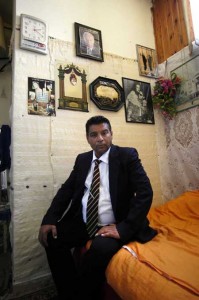 Not only that: The Palestinian dialect of Arabic contains many terms and words not found in “standard” Arabic – the result of the integration of Hebrew and Aramaic into the Arabic they were forced to learn after the various Arab and Turkish conquests. Israel Belkind, one of the organizers of the Bilu movement who reasearched the roots of the Palestinians during the 1890s, wrote that “It was already proven by Major Condor, in his research on the land of Israel, that the ‘Arabs’ of the Land of Israel had spoken Aramaic in the days of the Crusades, the language spoken by the Jews until the Arab conquest” – meaning that these Aramaic speaking ‘Arabs’ were actually Jews themselves.”
Not only that: The Palestinian dialect of Arabic contains many terms and words not found in “standard” Arabic – the result of the integration of Hebrew and Aramaic into the Arabic they were forced to learn after the various Arab and Turkish conquests. Israel Belkind, one of the organizers of the Bilu movement who reasearched the roots of the Palestinians during the 1890s, wrote that “It was already proven by Major Condor, in his research on the land of Israel, that the ‘Arabs’ of the Land of Israel had spoken Aramaic in the days of the Crusades, the language spoken by the Jews until the Arab conquest” – meaning that these Aramaic speaking ‘Arabs’ were actually Jews themselves.”
In fact, Misinai says, Aramaic was still the lingua franca among some villagers not too long ago. “In 1974, the settlers who established the modern Ofra were astounded to find that the residents of the village on the ancient biblical site of Ofra – called Tybiba – were Christians who spoke Aramaic.” While many gentiles converted to Christianity in the religion’s early days, they would most likely be Greek speakers; any group that spoke Aramaic is far more likely to have Jewish roots.
Many Jewish customs have survived among the Palestinians as well, Misinai says. “In Islam, parents are required to have their sons circumcised by the age of 13. While in many Islamic countries the custom is to wait several years, among Palestinians many perform the ritual a week after their son is born – meaning on the eigth day,” says Misinai. Other customs include sitting seven days for deceased loved ones instead of just three (a custom, Misinai says, that has fallen by the wayside since the first intifada), lighting memorial candles for the dead (a custom found nowhere in the Muslim world), lighting Sabbath candles, and practicing levirate marriage, or yibum – the practice of having a brother marry his deceased sibling’s wife under certain circumstances. That’s a widespread practice among the Bedouin, says Misinai, and in fact “much of the legal code of the Bedouins is remarkably similar to many laws in the Torah and the Mishna,” Misinai says. In addition, several Palestinian families own ancient Chanukah menorahs, which they used in mid-winter – around Chanukah time.
Yehuda Boorla, an Israeli writer, described in his book “Be’ein Cokhav” (about his service as an officer in the Turkish army during WWI), interesting information about an Arab attendant from the land of Israel who accompanied him. One section of the book describes a “moment of discovery” on the part of the attendant. Upon hearing the author speak about the Islamic custom of cutting off the breasts of Jewish women, the Arab attendant realized that his mother, who suffered from the same deformity, was in reality Jewish. Until today, old Palestinians in Jordan who moved there from west of the river tell of this tradition, says Misinai. “They say that this was done in cases where Muslim men married Jewish women, so that the Jewish women would not be able to breastfeed and their children would not take in the milk of their Jewish mothers. Thus the children would not be thought to be Jewish.”
One of the most curious of the Jewish customs that were once widespread among the Palestinians was the laying of tefillin – usually done by someone who was ill, especially by those suffering from headaches. The rare tefillin were wrapped in cloth (in order to preserve them, says Misinai). When a sick person needed “treatment,” they would place the tefillin box (which houses the scroll) on the middle of the ill person’s forehead and wrap the connected fabric straps around his head. With the use of a key, an assistant would tighten the strap, thereby creating pressure around the head. The heightened pressure on the head increased the headache pain – so when the tefillin was removed, it seemed as
Food, too, is high on the agenda of these lost Jews. Many Bedouins refrain from eating camel and other non-kosher animals, and around Passover time, many Palestinians find themselves with a yen for matzah. “In the region around Bethlehem there is a high demand for matzah during Passover. When trucks delivering matzah pass through, the customers crowd the trucks, taking the boxes right off the trucks even before unloading and bringing them into the store.” The same story repeats itself in Nazereth and Shfar’am, where residents make special trips to Upper Nazareth to buy matzah. “Possibly they do this because they like matzah, but given the other testimonies about these people, it’s more logical to say that, at least in origin, the demand for matzah during the start of the spring has more to do with religious custom than a recurring heightened seasonal desire for dry crackers,” says Misinai.
And while all the anecdotal evidence cited could be the result of historical confusion or some other factor, the one thing that cannot be falsified is the genetic record – which overwhelmingly proves the closeness of traditional Jews and Palestinians, says Misinai. “In 2001, The Human Immunology magazine published a genetic study conducted by Professor Antonio Arnez-Vilna, a Spanish researcher from the University of Complotensa in Madrid, who discovered that the immune systems of the Jews and the Palestinians are extremely close to one another in a way that almost absolutely demonstrates a similar genetic identity,” says Misinai. “Following the publication of the article, the magazine instructed readers to destroy it due to the fact that the author had inserted political opinions into the article,” Misinai says, adding that no allegations of falsified data were ever made.
Other studies, including a 2002 test by Tel Aviv University researchers, determined that only two groups in the world – Ashkenazi Jews and 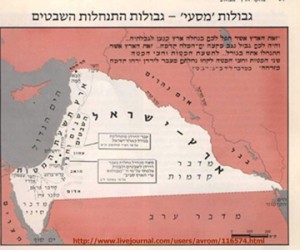 Palestinians – were genetically susceptible to an inherited deafness syndrome. All the studies he cites in his book, says Misinai, show that “the Palestinians are genetically much closer to Ashkenazi Jews than they are to the Arabs.” The findings, by the way, also should dispel for once and for all the canard that Ashkenazic Jews are descended from the central Asian Khazars, and not from the population of the Land of Israel.
Palestinians – were genetically susceptible to an inherited deafness syndrome. All the studies he cites in his book, says Misinai, show that “the Palestinians are genetically much closer to Ashkenazi Jews than they are to the Arabs.” The findings, by the way, also should dispel for once and for all the canard that Ashkenazic Jews are descended from the central Asian Khazars, and not from the population of the Land of Israel.
If “secret Judaism” is as widespread among Palestinians as Misinai says it is, why are so many so opposed to Jewish settlement here? Because the issue has been “hijacked” by groups – the leadership of the Arab world, and Palestinians who have forgotten their Jewish roots. For this reason, most of the youth are not told about their origins until later on – when they have learned the art of obfuscation, balancing multiple identities in order to ensure their survival.
It should be noted not all Palestinians hate Israel, Misinai points out; in 1982, for example, the leaders of Bidyah in Samaria offered to enlist in the IDF in the first Lebanon War in order to fight the PLO. “The Jewish origin of many of the Bidyah’s clans is a well known fact, even today,” says Misinai.
But still, there’s no denying that many Palestinians would like to see the Jews just disappear. And there are several reasons for that, says Misinai – the “loss of memory” among many Palestinians who now see the Jews as a “competitive other,” and fear of radicals and terrorists among those who would otherwise feel affinity for Jews – as they undertake terrorist acts in order to throw off suspicion that they are “collaborators.”
In his book, Misinai painstakingly describes the origins of the Palestinians, whom he says are made of chiefly of two groups: Jews who lived in the mountain regions of Judea and Samaria, who were able to maintain their Jewish identities for hundreds of years, before being forced to make a choice between exile and conversion to Islam; and members of the ancient nations of Edom and Moab, who were converted to Judaism en masse at least twice. (see box).
The two groups, whom Misinai calls respectively the “Descendants of Israel” and the “Brethren of Israel,” are the chief components of what we today call the Palestinians, with the addition of a smattering of Arabs (barely a few percent), Samaritans (who maintain their own distinct religious identity), descendants of the soldiers who served in the occupying Roman army after the destruction of the Second Temple and, even some survivors of the ancient Canaanite and Philistine nations – “idol worshippers who can be found in Gaza and in the village of Jisr a-Zarka, near Haifa,” says Misinai.
The collective memory of the mountain people was better than that of the “Brethren of Israel,” who eventually settled in the lowlands and coast from where most of the Jewish refugees orginated; most of these people forgot their Jewish roots, and they comprise the bulk of refugees who fled Israel in 1948. And, Misinai says, they’re the ones who are most active in terror activities against Israel. It’s this group that participated most actively in the intifada, with their objective to return to the lands they abandoned in 1948 (which they themselves occupied only about 100 years before, as they settled near areas were Jews had built towns and cities, in order to get work). In essence, though, the Brethren have now returned to their ancestral homeland east of the Jordan.
Which leaves the Descendants the major component of the Palestinian population on the west side of the Jordan. And it’s these people, Misinai believes, that Israel can – and must – work with in order to resolve the Palestinian issue. Not by creating a Palestinian state in Judea and Samaria, but by offering the “mountain people” the opportunity to reconnect with their roots – with the Jewish people, and with the modern state of Israel.
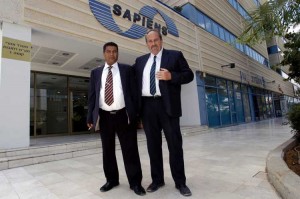 “It sounds impractical, but Zionism always was impractical. And yet it succeeded,” says Misinai. But the Palestinian problem has thrown Zionism out of kilter. Nobody, despite their reluctance to go through another partition, is interested in being an “occupier.” But Israel’s reintegration – Engagement, as Misinai puts it – of the Palestinians with the Jewish people would allow Zionism to renew its roots, and complete the task of building the modern Israeli nation, together with the people known nowadays as the Palestinians.
“It sounds impractical, but Zionism always was impractical. And yet it succeeded,” says Misinai. But the Palestinian problem has thrown Zionism out of kilter. Nobody, despite their reluctance to go through another partition, is interested in being an “occupier.” But Israel’s reintegration – Engagement, as Misinai puts it – of the Palestinians with the Jewish people would allow Zionism to renew its roots, and complete the task of building the modern Israeli nation, together with the people known nowadays as the Palestinians.
“There are lots of reasons why this would work,” says Misinai. “The fact that most Palestinians consider themselves Muslim is not an issue, because most of the Palestinians are not particularly religious Muslims. Until recent decades, there were few mosques relative to population outside Jerusalem. It was King Hussein, and later the Israeli Ministry of Religion, that prompted much of the mosque building in recent years. Bidyah, for example, only had one mosque for 25,000 residents until recently.”
In his writings, Ben Zvi cites an interesting phenomenon that he observed. “When the Palestinian peasant swears in the name of the prophet Mohammed, the oath is not taken seriously. But if he goes to the grave of a holy person of the village or of the surrounding area and swears there, we may completely rely on his oath.” The Palestinians’ veneration of the Jewish prophets, their preservation of the gravesites of the Jewish forefathers, and their embrace even of Jewish rituals (Ben Zvi cites witnesses who recounted Palestinians and Bedouin coming to dance at the grave of Rabbi Shimon Bar Yochai in Meron on Lag Ba’omer) indicates that the musta’abariority would opt for the latter.
This is where the state has a major role to play, he says. “Most Palestinians are loyal above all to their families, then to their clans, then to those in position of power and only at the end to their religion and people. A strong State of Israel, confident in its direction and its just cause, can successfully execute the engagement plan.”
One reason Palestinians have kept their Jewish roots secret for so long – despite the desire of many to come out of the Islamic closet – is because of their fear of the bully elements in the Palestinian and Arab leadership – the same groups that perpetuate the misery of Israeli Jews and Descendants of Israel. “Many of the Descendants’ families are forced to prove their loyalty to the ’cause,’ on pain of death,” says Misinai. “For example, many families name one of their children Jihad in order to ‘prove’ their credentials as loyal fighters against the Jews.”
If the State were to offer them an alternative, however, Misinai says many would find the courage to break out of their old patterns and embrace their true heritage. It’s not at all about conversion, he says – more about developing a cultural affinity and a single national group. But, he says, it’s likely that a large number would want to convert anyway. Even if many Palestinians prefer not to join the Jewish people, the fact that many would be willing would set the tone.
For similar reasons Israeli Jews have, since the days of Ben Zvi and Ben Gurion, shunted aside the clear evidence of the Jewish background of the Palestinians. “After the Holocaust, the issue was set aside, as the yishuv had more pressing matters, besides the obvious issues of language and lifestyle that separated Jews and Palestinians – not to mention the suffering inflicted by the various uprisings and pogroms conducted agains the yishuv. And the arrival of Jews from Eastern countries who had just been booted out of their homes by Muslims, whom they didn’t trust, only exacerbated the divisions.” But now, sixty years later, with the seemingly intractable issue of two nations laying the same ancestral claim to the same piece of land, it is time to revisit the past – in order to build the future.
In the end, Misinai says, the reintegration of the Palestinians with the Jewish people is the best – and only – solution. “We’ve been down the path of partition, defensive war, and what the world calls occupation. Nothing has worked. The world is getting very tired of our bickering, and is pushing to implement a solution – any solution. So far, the only solutions are the ones that have failed, but here is some new, fresh thinking, that many Jews and Palestinians would accept – and if we accept it, so will the nations of the world.” Misinai’ Engagement would unite the “two kingdoms of Israel” described by the Prophet Ezekiel. “The Jews who went into exile held onto their culture, beliefs and religion, while those that remained behind held as long as they could to the Land of Israel. Both loves – love of Torah and love of Land – come from the same wellsprings. It’s time to repair the historic damage done by our enemies, the Romans, and reunite our people.”


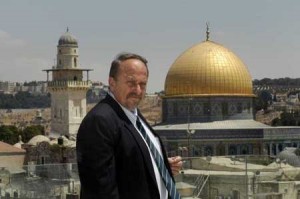

![Reblog this post [with Zemanta]](http://img.zemanta.com/reblog_e.png?x-id=02f9a74b-a9a2-4a88-94ed-d3fd00670861)


















